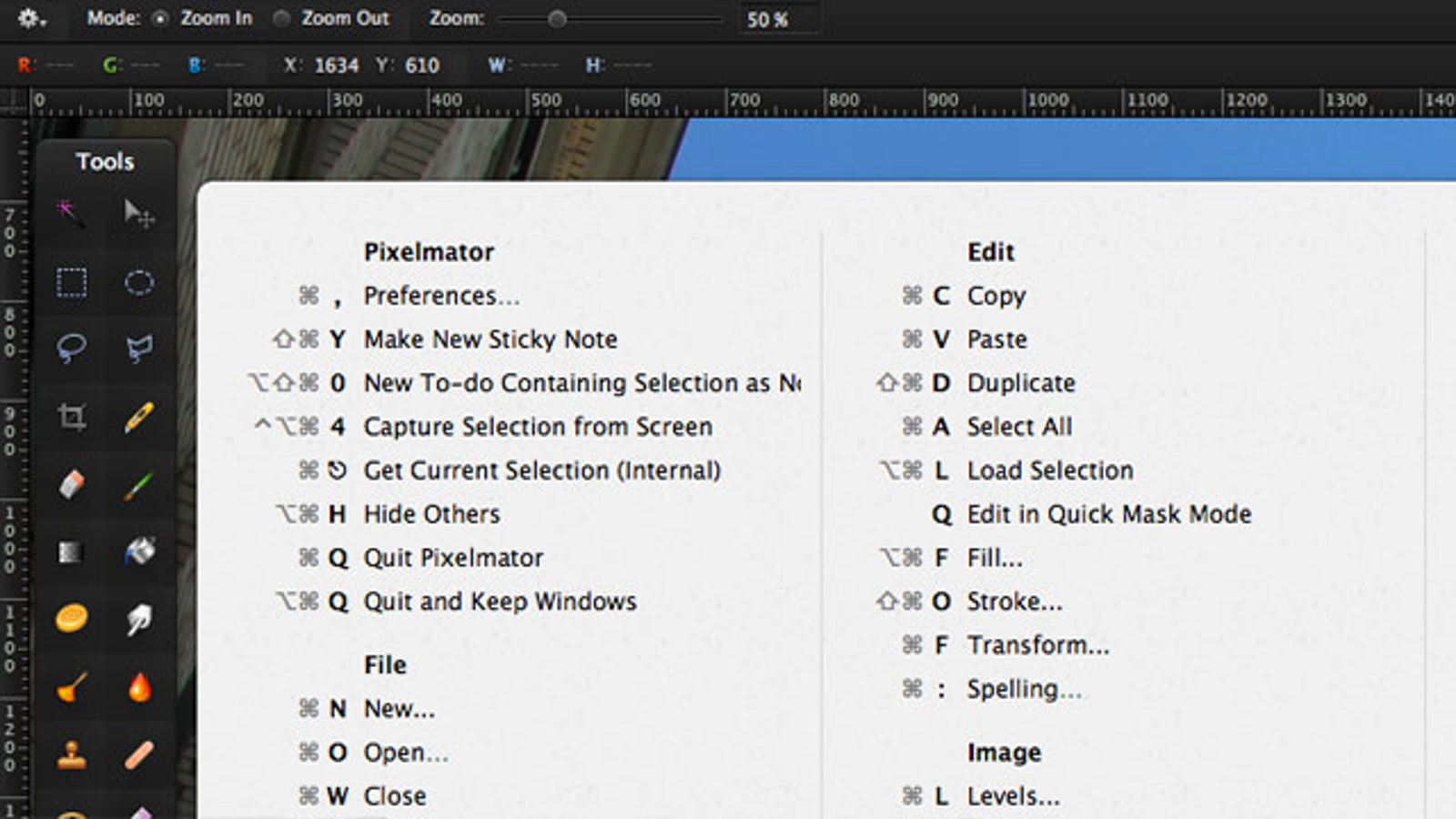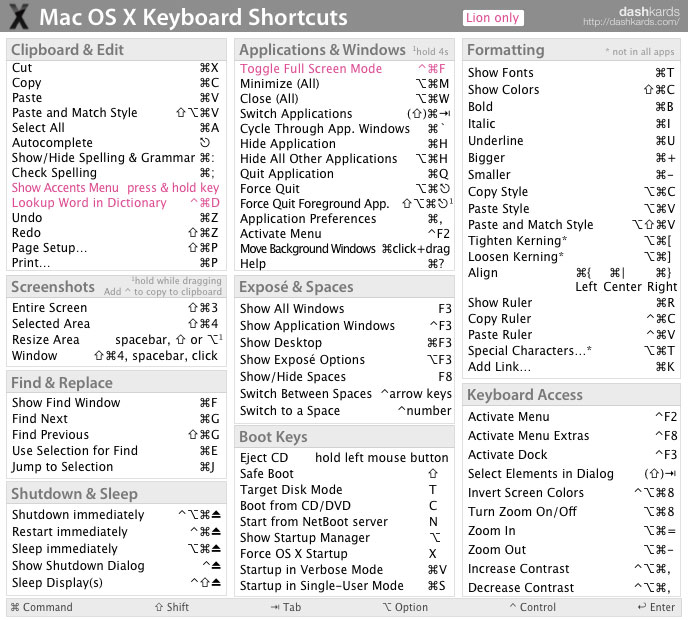
If you want to return all the shortcuts to their original keystroke combinations, go to the Shortcuts pane of Keyboard preferences and click Restore Defaults. Find the menu command that’s using it, then reassign the keyboard shortcut for that item. If you assign a keyboard shortcut that already exists for another command or app, your new shortcut won’t work.
#SHORTCUT MACOS MAC#
This article provides instructions for creating desktop shortcuts on a Mac computer for files, folders, and websites. For a website shortcut, highlight the URL and drag and drop it from the address bar to the desktop. Quit and reopen any apps you’re using for the new keyboard shortcut to take effect. Right-click (or Control + Click) on the file and select Make Alias from the menu. You can’t use each type of key (for example, a letter key) more than once in a key combination. In the list on the right, select the tickbox next to the shortcut you want to change.ĭouble-click the current key combination, then press the new key combination you want to use. In the list on the left, select a category, such as Mission Control or Spotlight. On your Mac, choose Apple menu > System Preferences, click Keyboard, then click Shortcuts. You can customise some keyboard shortcuts by changing the key combinations. Connect a wireless keyboard, mouse or trackpad.Get started with accessibility features.


Manage cookies and other website data in Safari.View Apple subscriptions for your family.Subscribe to podcast shows and channels.Sync music, books and more between devices.Send files between devices with AirDrop.Make and receive phone calls on your Mac.Insert photos and documents from iPhone or iPad.Use a keyboard and mouse or trackpad across devices.Use Continuity to work across Apple devices.Use SharePlay to watch and listen together.Use Live Text to interact with text in a photo.Make it easier to see what’s on the screen.Change the picture for you or others in apps.
#SHORTCUT MACOS INSTALL#
#SHORTCUT MACOS HOW TO#
How to Create Desktop Shortcut on Mac Create Desktop Shortcuts on Mac Using Drag and Drop Add Folder Shortcuts to Dock on Mac How to Create Desktop Shortcuts on Mac. Since Automator workflows can include AppleScript, Python or shell scripts, you can do pretty much anything this way! Anyways, here are two easy ways to create desktop shortcuts on Mac running macOS Big Sur or Catalina. You can assign a global keyboard shortcut to any Automator workflow this way. Of course, you don’t have stop at launching applications. When the active application uses the same keystroke, the application’s definition will precede your global shortcut. Select it and click ‘Add Shortcut’ to assign a global shortcut. Scroll all the way down the list of services under the ‘General’ heading, you should find the service you just created.(Even on Mojave, it is still called ‘Services’.) Click the ‘Shortcuts’ tab and select ‘Services’ from the list on the left side. Give it a meaningful name such as ‘Open Terminal.’ Since you chose Quick Action or Service, this workflow will be saved in ~/Library/Services. Choose ‘Other…’ and select Terminal in the ’/Applications/Utilities` folder. The popup menu where you can slect an application in the action will only show applications from the /Applications folder.Then search for ‘Launch Application’ action in the library pane on the left and add it to your workflow by double-clicking or dragging.In the new workflow configure the input to be ‘no input’ and the application to be ‘any application.’.In the chooser for a new Workflow, choose ‘Quick Action’ (on Mojave) or ‘Service’ on earlier versions of macOS. First, open the Automator application.MacOS has an option to assign custom global keystrokes to pretty much anything, but it is not obvious how to get there. Note: alternative terminal applications such as iTerm2 may have this built-in. Someone on the MacAdmins Slack recently asked how you could assign a global keyboard short cut to open Terminal on macOS.


 0 kommentar(er)
0 kommentar(er)
